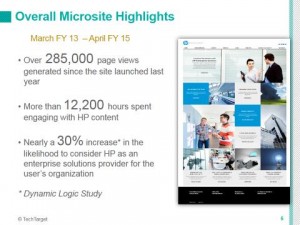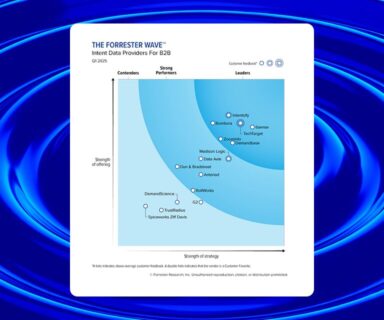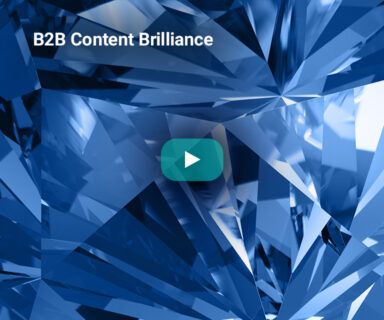 Roshantha Pillay based in Sydney, Australia, is the APJ (Asia Pacific and Japan) Campaign Marketing Manager for HP Enterprise Services. She works across the 7 Practices, namely: Workload and Cloud, Workplace and Mobility, Enterprise Security, Business Applications, Analytics and Data Management, Business Process Services, and Industry Solutions. Being at a regional level, she gets closely involved across countries and regions including South-Pac, (Australia and New Zealand), Southeast Asia, India, China, and Japan running data driven integrated campaigns and programs.
Roshantha Pillay based in Sydney, Australia, is the APJ (Asia Pacific and Japan) Campaign Marketing Manager for HP Enterprise Services. She works across the 7 Practices, namely: Workload and Cloud, Workplace and Mobility, Enterprise Security, Business Applications, Analytics and Data Management, Business Process Services, and Industry Solutions. Being at a regional level, she gets closely involved across countries and regions including South-Pac, (Australia and New Zealand), Southeast Asia, India, China, and Japan running data driven integrated campaigns and programs.
Can you talk about any specific initiatives that have helped marketing become more aligned with sales?
One key initiative the Enterprise Services team has invested in is a comprehensive Microsite we’ve been running since 2013. We built this primarily to build awareness and education in our APJ region but it’s also been a great site for sales to access so they can promote it to our customers and prospects. We’ve developed and enhanced the Microsite over time and in doing so really needed to take an integrated approach when defining what to include. Our sales teams were definitely a big part of the mix and it’s helped get our teams to work closely on what would be most effective.
Is there anything specific you found that has been more effective in aligning sales and marketing more closely?
Sales is a significant aspect of how we go to market because we work closely with the account and sales execs. The different practices are also key to how we get our content, and how we decide on what is essential for us in terms of going to market. When building out the Microsite for example, we needed to consider all sides of how people would engage, how to nurture them along the way with different types of content, and how that engagement activity could be used effectively in sales follow-up. Those became active and ongoing discussions between marketing, the practices, and sales. All of which has helped our teams get more closely aligned.
Since you have lengthier sales cycles, what things are more essential to communicate with your regional and in-country sales teams?
We work hard to maintain a strong level of communications with regional and in-country sales throughout the sales cycle. Once sales grasped the significance of the data that we were sharing with them and got used to the idea of how it actually all worked, they became more engaged in conversations realizing the potential of the data and how it could assist them in discovering more about their prospects. Also, the current reporting on our site, in terms of our overall traffic and performance has allowed us to be more strategic in determining the content we focus on, develop, and promote whether it be white papers, videos etc.
Can you talk about how you are using data and TechTarget’s Activity Intelligence?
We’ve worked through the process with the TechTarget team to get to the stage where we can start to monitor activities people are taking, and track their journey within the Microsite we are running. Whether they’re engaging in a video or downloading content, we can form assessments about how they are educating themselves, and the paths that they’re taking to get to where they want to go. The data that we’re now extracting is used a lot more analytically. We started with an English site and then proceeded to build Chinese and Japanese pages as part of the overall site to encourage our Chinese and Japanese customers and prospects to use those as a resource of information. We rely on TechTarget in terms of targeting the right people to our site and continue to promote our site through various channels.
What changes have you observed on how the buying process has evolved over the past few years?
Today, the buyer is in control more than ever before. It started five or so years ago. Buyers, (like most of us as consumers) want instant gratification and an instant digital connection. They know what they want and know where to go online to search and find it. We still leverage recommendations made by our peers and/or friends.
Today’s statistics indicate buyers are 60-75% into their research process before they pick up a phone and contact a partner or a vendor sales rep. Given that, the other important thing is to have content readily available during that shorter buying cycle. For example ROI data, business justification, or a white paper can help customers make their decisions. Having this may help drive them to make a decision to buy from you.
Can you describe the Microsite you’ve been running with TechTarget and ROI you are getting?
The site has really evolved since it first launched back in March 2013. It started out more as a resource library containing HP content with a central write-up of enterprise services specific to HP and a video. In 2014, together with the TechTarget team we redesigned it to the version it is today: www.hp-enterprisesolutions.com. Some of the major enhancements included segmenting topics into articles and then highlighting key assets that could be featured on each page to make it more consumable for visitors. We also added a homepage to the site with high impact imagery that showcased featured assets making it easier to navigate.

From there we continued with a resources page and localized the site for different regions. We now have pages specifically for English, Chinese, and Japanese since the sites inception. We’ve been seeing some great results from it, too.
Since it’s launching:
- Over 285,000 page views generated
- More than 12,200 hours spent engaging with HP content
- Nearly a 30% increase* in the likelihood to
consider HP as an enterprise solutions
provider for the user’s organization
Since running the Microsite, how would you say it’s helped improved marketing and sales overall?
The site has had a tremendous impact. It’s really allowed us to move up the scale, raise awareness and provides a good call to action for us in our campaigns. It’s a content rich environment where customers and prospects can engage with HP and its content. As we measure CTRs and CPMs, we really see a difference in how much that’s grown over time. Largely due to the fact that we created an environment that our prospects and customers in our region can access anytime to learn more. From a campaign perspective, it’s allowed us to have a home for engaging content and from a data analysis perspective, have access to what people download, and how they integrate with what we have on the site. It definitely enhances our knowledge in terms of their purchasing intentions, buying cycles, and what they’re looking for.
What things do you take into consideration today, on how IT buyers, conduct research and engage with vendors?
Buyers have access to information at their fingertips more than ever before. If they want something, they simply Google it, or access it online. They no longer need to pick up the phone or organize a meeting. They want to be able to access content and information anywhere at any time. So, as a vendor, we really need to be there at the right time and place to address their questions online, provide them with key information and keep them engaged so we can continue to retain our mindshare and keep our brand visible.
Social media has also changed how we work today. It gives us new ways to attract and retain customers to have an ongoing relationship with us. The key thing with social is if you don’t get it right, complaints can spread like wildfire across all social media and can damage your brand and business rapidly. Hence it is essential and crucial to have an effective and well-managed presence on social media.
Is there a particular type of social media you are using in your marketing practices?
Enterprise Services is focused on the B2B side of things so we tend to use LinkedIn and also use Twitter for social media channels. It’s allowed us to be closer to the audience and be more targeted. In our upcoming phases with TechTarget we’re looking to integrate more social fields into our Microsites.
When you evaluate media partners, what criteria is most important in how they work with you?
When evaluating a media partner, I definitely look for ones that are global, accountable and responsible. Also a partner who is open, innovative, and highly capable with new ideas and willing to listen and help us implement them, and have a passion for customers needs. When you work across APJ, it is key to work with a partner that is aware of the cultural nuances in those regions. TechTarget continues to be an integral part of our team. For example, we do different marketing to China vs. Japan vs. Southeast Asia vs. South Pacific, since they are quite different markets with unique environments.
We also look for partners we can have a formidable and growing relationship with us. Not necessarily ones who “yes” us all the time but rather ones who can work collaboratively, and present us with different options and ideas to reach the best outcome for our organization.




